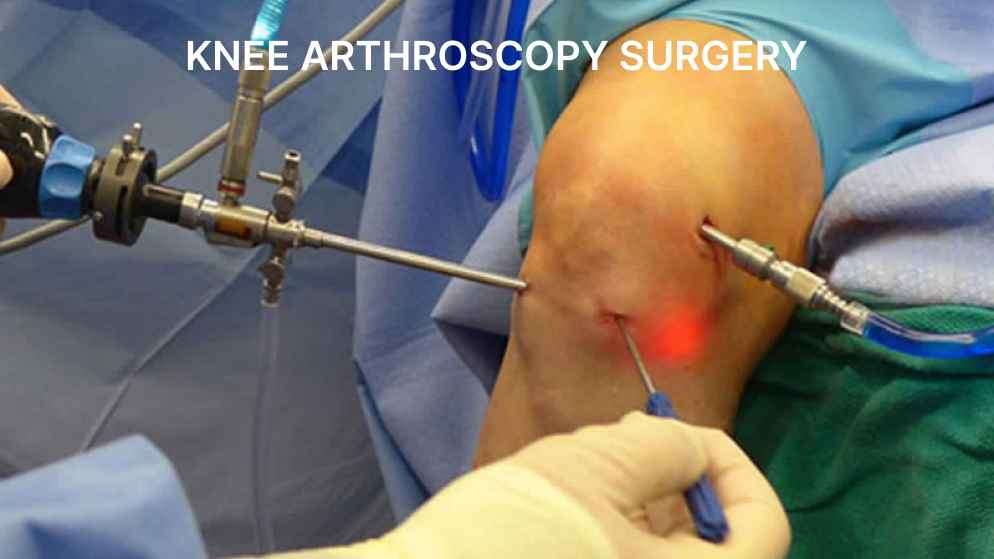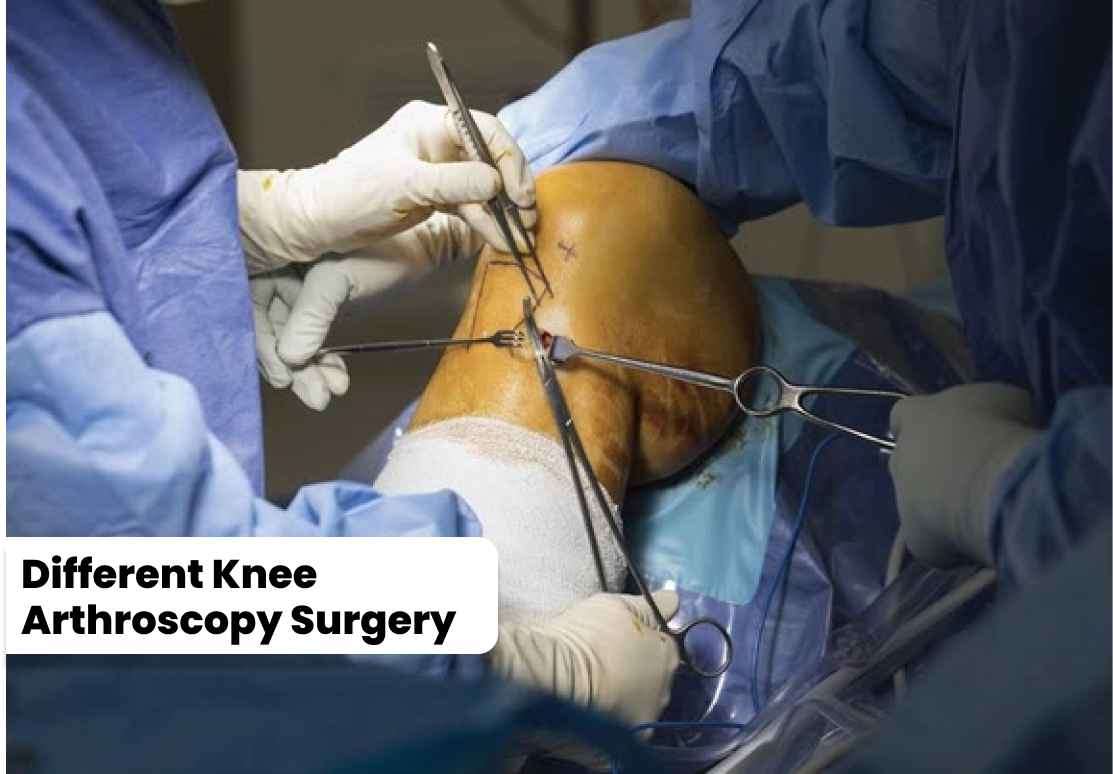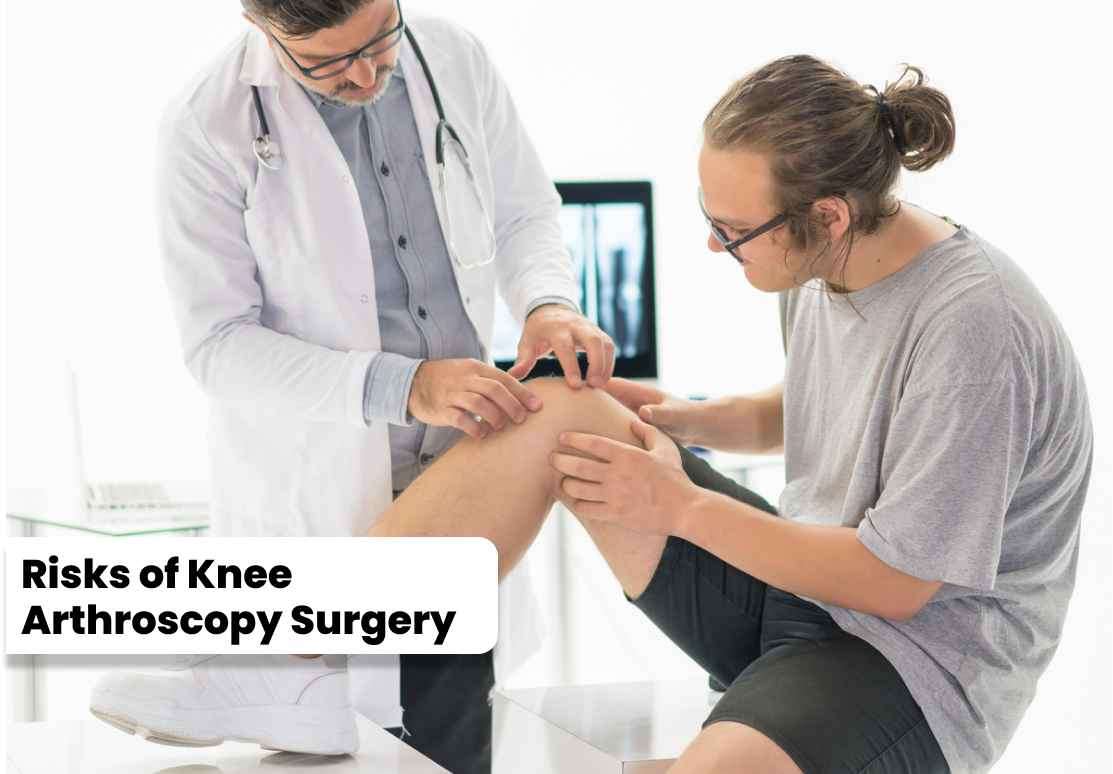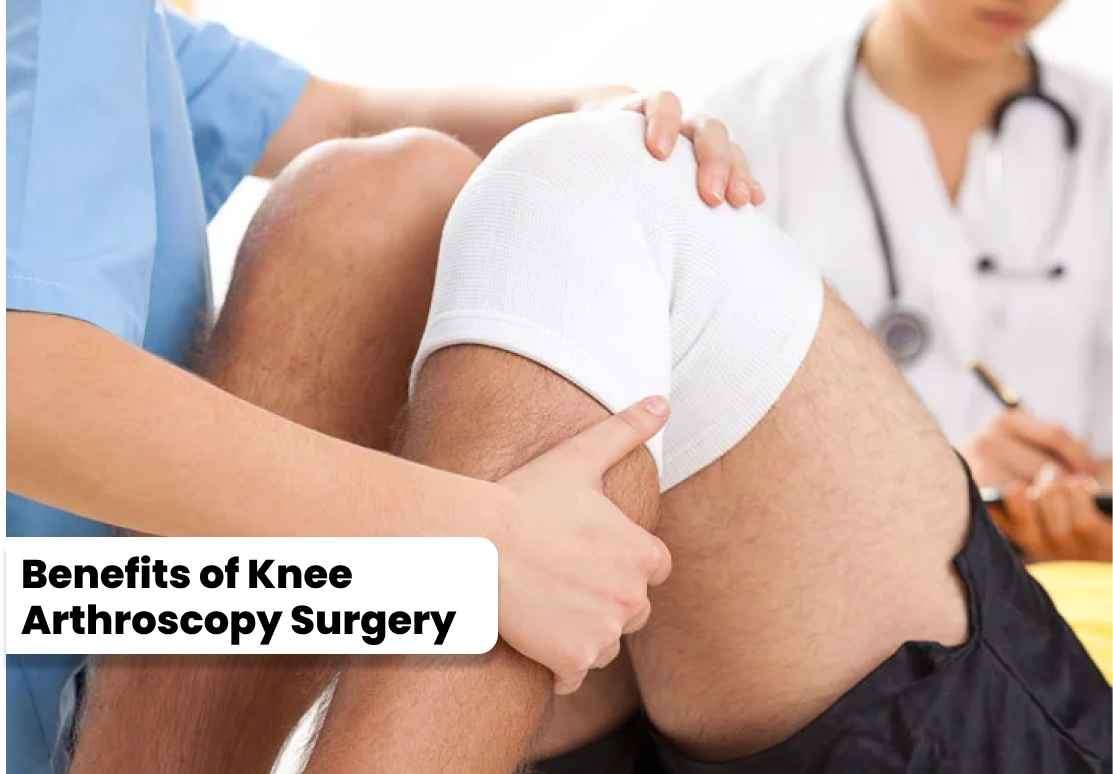Knee arthroscopy is a minimally invasive surgical procedure that allows
visualization and treatment of various knee joint conditions using an
arthroscope, a small camera inserted through small incisions in the
knee.
Call us to book a appointment with the best Ortho specialist near you.
Knee arthroscopy is a least invasive surgical procedure that uses an arthroscope, a small camera inserted through small incisions in the knee, to visualise and treat various knee joint conditions. It is commonly used to diagnose and treat knee joint problems such as injuries, inflammation, and certain diseases.

Knee arthroscopy is a least invasive surgical procedure that uses an arthroscope, a small camera inserted through small incisions in the knee, to visualise and treat various knee joint conditions. It is commonly used to diagnose and treat knee joint problems such as injuries, inflammation, and certain diseases.
Procedure Description Meniscectomy Careful evacuation
of all or part of a torn meniscus, which is the ligament cushion between the
thigh\thin Meniscal Repair Stitching or sewing
the torn meniscus back together to advance recuperating and safeguard knee
capability Anterior Cruciate
Ligament (ACL) Reconstruction Reproducing the
torn upper leg tendon utilizing a join, typically taken from the patellar
ligament or hamstring Posterior Cruciate
Ligament (PCL) Reconstruction Fixing a torn PCL
utilizing a join, like leg tendon reproduction Knee Cartilage
Transplantation Relocating solid
ligament from one more piece of the knee or from a benefactor to fix harmed
ligament Microfracture
Surgery Making little
breaks in the unresolved issue the development of new ligament in areas of
harm Synovectomy Making little
breaks in the irritating issue the improvement of new tendon in areas of
damage Loose Body Removal Extraction of free
sections or bodies inside the knee joint, which can cause torment and
development issues Lateral Release Delivering or
slicing the tight parallel designs to reduce patellar following issues Patellar
Realignment Repositioning the
patella (kneecap) to address precariousness or malalignment

|
Procedure |
Description |
|
Meniscectomy |
Careful evacuation of all or part of a torn meniscus, which is the ligament cushion between the thigh\thin |
|
Meniscal Repair |
Stitching or sewing the torn meniscus back together to advance recuperating and safeguard knee capability |
|
Anterior Cruciate Ligament (ACL) Reconstruction |
Reproducing the torn upper leg tendon utilizing a join, typically taken from the patellar ligament or hamstring |
|
Posterior Cruciate Ligament (PCL) Reconstruction |
Fixing a torn PCL utilizing a join, like leg tendon reproduction |
|
Knee Cartilage Transplantation |
Relocating solid ligament from one more piece of the knee or from a benefactor to fix harmed ligament |
|
Microfracture Surgery |
Making little breaks in the unresolved issue the development of new ligament in areas of harm |
|
Synovectomy |
Making little breaks in the irritating issue the improvement of new tendon in areas of damage |
|
Loose Body Removal |
Extraction of free sections or bodies inside the knee joint, which can cause torment and development issues |
|
Lateral Release |
Delivering or slicing the tight parallel designs to reduce patellar following issues |
|
Patellar Realignment |
Repositioning the patella (kneecap) to address precariousness or malalignment |
1. Contamination: At the careful location, there is a risk of illness. Despite this, the likelihood of this happening is typically low because the process only makes small cuts. A small chance of dying exists during the arthroscopy procedure, both inside the joint and distantly at the entry site locations.
2. Development of Blood Clumps: The occurrence of blood clusters, also known as profound vein apoplexy (DVT), is a known risk. If these coagulations reach the lungs and result in a pneumonic embolism, it could be dangerous.
3. Vein or Nerve Damage: There is a small risk of impairment to the veins or nerves nearby the surgical site, which could result in confusion, weakness, or deadness.
4. Gambles Involving Sedation: Knee arthroscopy is frequently carried out under general anesthesia or local anesthesia. While these are largely safe, there are inherent risks associated with sedation, such as adversely susceptible reactions, breathing problems, or hostile medication reactions.
5. Solidity and Pain: Some patients may have hardness and pain in the knee joint after the operation. Typically, only temporary, this can be treated with analgesic, S and vigorous recovery.
6. Ligament or Tendon Damage: Occasionally, the arthroscopic procedure might unintentionally damage the ligaments or tendons inside the knee joint.
7. Unsatisfactory Reduction of Side Effects: Knee arthroscopy may not always fully address the underlying problem or minimize side effects. Certain situations could

1. Contamination: At the careful location, there is a risk of illness. Despite this, the likelihood of this happening is typically low because the process only makes small cuts. A small chance of dying exists during the arthroscopy procedure, both inside the joint and distantly at the entry site locations.
2. Development of Blood Clumps: The occurrence of blood clusters, also known as profound vein apoplexy (DVT), is a known risk. If these coagulations reach the lungs and result in a pneumonic embolism, it could be dangerous.
3. Vein or Nerve Damage: There is a small risk of impairment to the veins or nerves nearby the surgical site, which could result in confusion, weakness, or deadness.
4. Gambles Involving Sedation: Knee arthroscopy is frequently carried out under general anesthesia or local anesthesia. While these are largely safe, there are inherent risks associated with sedation, such as adversely susceptible reactions, breathing problems, or hostile medication reactions.
5. Solidity and Pain: Some patients may have hardness and pain in the knee joint after the operation. Typically, only temporary, this can be treated with analgesic, S and vigorous recovery.
6. Ligament or Tendon Damage: Occasionally, the arthroscopic procedure might unintentionally damage the ligaments or tendons inside the knee joint.
7. Unsatisfactory Reduction of Side Effects: Knee arthroscopy may not always fully address the underlying problem or minimize side effects. Certain situations could
1. Help with Discomfort: Assistance with discomfort is one of the key benefits of knee arthroscopy. The approach can treat a variety of knee injuries and disorders, including ruptured tendons, free ligaments, and meniscus tears, which can significantly lessen pain and discomfort.
2. Speedier Recover: Compared to open surgery, knee arthroscopy often has a speedier recovery period because of how little intrusive it is. Patients may experience reduced pain, swelling, and solidity, allowing them to resume their regular activities more quickly.
3. Reduced Hospital Stay: Knee arthroscopy is frequently conducted on an outpatient basis, which means that patients can typically return shortly after the medical treatment. This eliminates the need for an extended hospital stay and associated costs. 4. Less time Spent Recovering: When compared to other invasive techniques, knee arthroscopy often has a shorter recovery time. Patients usually endure less pain, swelling, and overall downtime due to the less gruesome nature of the operation, allowing them to resume their regular activities sooner.
5. Capability and Execution: Knee arthroscopy can aid in reestablishing or further developing knee capability and execution for athletes or those who lead active lifestyles. The technique may enhance athletic potential and general physical abilities by addressing problems like torn tendons or damaged ligaments
6. Patient Satisfaction: Many patients who have knee arthroscopy express high levels of satisfaction with the procedure. A favorable patient experience is enhanced by its minimally intrusive methods, targeted therapy, speedier recovery, and side effects.

1. Help with Discomfort: Assistance with discomfort is one of the key benefits of knee arthroscopy. The approach can treat a variety of knee injuries and disorders, including ruptured tendons, free ligaments, and meniscus tears, which can significantly lessen pain and discomfort.
2. Speedier Recover: Compared to open surgery, knee arthroscopy often has a speedier recovery period because of how little intrusive it is. Patients may experience reduced pain, swelling, and solidity, allowing them to resume their regular activities more quickly.
3. Reduced Hospital Stay: Knee arthroscopy is frequently conducted on an outpatient basis, which means that patients can typically return shortly after the medical treatment. This eliminates the need for an extended hospital stay and associated costs.
4. Less time Spent Recovering: When compared to other invasive techniques, knee arthroscopy often has a shorter recovery time. Patients usually endure less pain, swelling, and overall downtime due to the less gruesome nature of the operation, allowing them to resume their regular activities sooner.
5. Capability and Execution: Knee arthroscopy can aid in reestablishing or further developing knee capability and execution for athletes or those who lead active lifestyles. The technique may enhance athletic potential and general physical abilities by addressing problems like torn tendons or damaged ligaments
6. Patient Satisfaction: Many patients who have knee arthroscopy express high levels of satisfaction with the procedure. A favorable patient experience is enhanced by its minimally intrusive methods, targeted therapy, speedier recovery, and side effects.
|
City |
Minimum Cost (INR) |
Average Cost (INR) |
|
Delhi |
30,000 |
60,000 |
|
Mumbai |
35,000 |
70,000 |
|
Chennai |
25,000 |
55,000 |
|
Bangalore |
30,000 |
65,000 |
|
Kolkata |
20,000 |
50,000 |
|
Hyderabad |
25,000 |
55,000 |
|
Ahmedabad |
20,000 |
45,000 |
|
Pune |
25,000 |
55,000 |
|
Jaipur |
20,000 |
45,000 |
|
Chandigarh |
25,000 |
50,000 |
Please Wait..